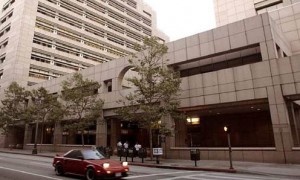By: Rami Kaushal, Head – Consulting & Valuation, CBRE South Asia
 Track2Realty: There are still significant investment opportunities left in India’s real estate market. For investors looking at cost-effective projects to park their funds, this might be a right time as weak market sentiments are likely to lead to weak valuations, providing windows for investing in quality projects.
Track2Realty: There are still significant investment opportunities left in India’s real estate market. For investors looking at cost-effective projects to park their funds, this might be a right time as weak market sentiments are likely to lead to weak valuations, providing windows for investing in quality projects.
Housing demand remained largely stagnant across major urban markets in India during the first half of 2013. End-user perceptions of inflated housing prices, as well as high borrowing costs kept off home buyers during this period. In fact, subdued demand levels even led to a price correction of around 10%–15% across most markets in India. Recent policy moves from the Central Bank—vis-à-vis the rise in repo rate as well as the 20:80 schemes—are expected to further dampen investor sentiments.
With home loans having gone up now, home buyers are likely to continue to remain cautious and delay their purchase decisions further. However, a silver lining seems to be the increasing interest of non-resident Indians (NRIs) in purchasing property to leverage the depreciating value of the rupee.
Despite the prevailing demand slowdown, residential supply in key markets across the country witnessed an increase in the first six months of 2013. As per CBRE’s latest report on the residential segment, India Residential Market View H1 2013, more than 65,000 units were launched across India’s leading cities in the first half of the year, as compared to about 48,000 units launched during the second half of 2012.
This demand/supply mismatch has contributed to an oversupply situation in most cities, leading to mixed sentiments on asset pricing across various cities. About 88% of this supply was concentrated in the DelhiNational Capital Region (NCR), Mumbai and Bangalore markets—indicating their prominence as residential real estate investment destinations. Not surprisingly, most of these new launches across India’s top cities came up in peripheral/suburban areas, and in the mid-end price segment—to cater to the rising demand for affordable housing.
Office space absorption in the top seven cities of the country declined by approximately 14% q-o-q—registering around 6 million sq.ft as compared to around 7 million sq.ft in the previous quarter—according to the findings of CBRE’s latest report, India Office Market View Q3 2013. Corporate office occupiers remained cautious amid a subdued economic outlook—a trend which continued to inhibit office leasing activity across the country.
Most leasing activity was observed in the small and medium sized format office spaces, with very few large scale transactions getting finalized; back-office space requirements were also constrained by cost pressures and delays in approvals. Transaction activity was dominated by the NCR, Mumbai and Bangalore, each recording more than a million square feet of office space leasing during the quarter ending September.
India’s retail real estate segment saw retailer demand strengthen across the country in the first half of 2013. The first six months of the year also saw global and domestic retailers continuing to open stores along prime high streets and malls. Demand from international retailers rose steadily during this period, particularly in Mumbai and New Delhi. Relaxation of legislative norms governing FDI in India’s retail market has encouraged overseas retailers to set up shop. For the period January–June 2013, the Foreign Investment Promotion Board (FIPB) has cleared investment proposals worth INR 800 crore for 18 global operators in single brand retail. Multi-brand retailers, however, are yet to make an entry.
As far as housing investments go, home buyers may consider the present period for investing in good housing properties. This might be the right time to take advantage of the price weakness in NCR markets, for instance. Especially in the light of the current festive season when developers are offering various discounts, free merchandise and services to home buyers, it might be advisable to take advantage of quality housing projects amid weakening values. It is an end-user market currently; and price points in the premium/luxury as well as high-end/mid-end segments are expected to remain stable in the short- to medium-term.
Corporates occupiers looking at renewing or restructuring leases in the short to medium term will continue to hold strong leverage in the office leasing market. They may, in fact, consider making their leasehold portfolios more flexible by taking advantage of the current market scenario. Corporates may also use this opportunity to optimize their real estate portfolio by consolidating or relocating to more cost-effective locations. Demand in the retail real estate space is expected to remain steady.
The rate of new store openings is expected to increase over the course of the year with a number of major fast fashion groups planning market entry and/or expansion in the coming months. On the legislative side, while clarity has been provided on sourcing and city spread there is still confusion over the regulations concerning limitations on minimum investments and creation of back-end retail infrastructure. It is expected that the government will continue to resolve the concerns of overseas retail groups willing to invest in India.
Key trends expected to govern PE investments going forward will include investors valuing in-depth micro-market knowledge; funds with smaller ticket sizes; third party exits; and the entry of new investment instruments, such as REITs. On the whole, India’s investment market is expected to remain subdued over the remainder of the year—with most investors waiting for the resolution of the ongoing political deadlock, while keeping an eye on the forthcoming general elections scheduled for early 2014.





